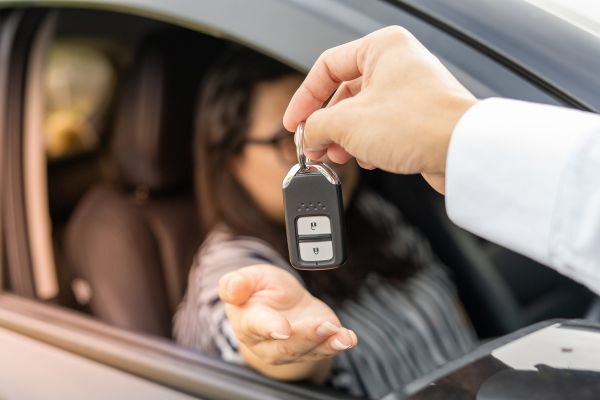For many young drivers, the journey to independence begins with a set of car keys. But with this newfound freedom comes the responsibility of finding the best car insurance for young drivers—a task that can feel overwhelming, especially when navigating the complexities of rates, coverage, and eligibility. In 2025, as insurance companies continue to innovate with digital tools and personalized policies, young drivers now have more opportunities than ever to secure the right protection without breaking the bank. Understanding how to identify the best fit is essential not just for legal compliance, but also for peace of mind on the road.
Why Car Insurance Matters More for Young Drivers
Insurance providers often consider young drivers—typically those under 25—as high-risk due to limited driving experience. This results in higher premiums compared to older, more seasoned motorists. However, the best car insurance for young drivers isn’t simply the one with the lowest price tag. It’s about finding a policy that balances affordability with robust coverage, ensuring that in the event of an accident, both the driver and their finances are protected. As a young driver, selecting the right insurer could mean the difference between a minor inconvenience and a financial catastrophe.
What Defines the Best Car Insurance for Young Drivers
In 2025, several factors distinguish superior insurance providers from the rest. The best car insurance for young drivers will typically offer customizable coverage plans, strong customer support, user-friendly mobile apps, and discounts specifically designed for young or new drivers. Some companies also reward good grades, safe driving behavior, and even participation in telematics programs that track and encourage responsible driving. A policy that includes accident forgiveness and roadside assistance can also provide an extra layer of security and value.
Furthermore, insurers that focus on transparency—clearly outlining what is and isn’t covered—help young drivers make informed decisions. Given the unique challenges faced by younger individuals, such as limited credit history or lower income, flexibility in payment plans can also be a decisive factor in determining the best provider.
How to Evaluate Insurance Companies in 2025
With dozens of insurance companies competing in the market, young drivers may wonder how to narrow down the options. One of the most effective strategies is to use comparison tools that evaluate providers based on price, coverage options, customer satisfaction ratings, and financial strength. However, it’s not only about crunching numbers. Reviews from other young drivers can offer valuable insights into real-world experiences with claims processes and customer service.
The best car insurance for young drivers often comes from companies that specialize in working with newer drivers or have dedicated programs tailored to their needs. Some of these programs include educational resources, online driving courses, and apps that monitor driving habits in exchange for potential discounts. When choosing a policy, it’s important to consider not only the base premium but also the cost of deductibles, availability of coverage for personal belongings, and whether the plan offers uninsured motorist protection.
Technology’s Role in Shaping Modern Policies
In 2025, technology has transformed how car insurance operates. Telematics, artificial intelligence, and predictive analytics now play a major role in assessing risk. For young drivers, this evolution is particularly beneficial. Instead of being automatically penalized based on age alone, insurers now use data from mobile apps and vehicle sensors to evaluate actual driving behavior. Safe driving habits—such as smooth braking, adhering to speed limits, and avoiding distractions—can translate into significant savings over time.
This shift means that the best car insurance for young drivers may be the one that leverages this technology most effectively. By participating in usage-based insurance programs, young drivers can demonstrate responsibility behind the wheel and build a record that could lead to lower premiums sooner than ever before. Additionally, insurance companies that offer dynamic pricing based on driving data give young motorists more control over their costs, creating an incentive to maintain safe habits.
Common Mistakes to Avoid When Choosing a Policy
Selecting a car insurance policy is not a decision that should be made hastily. One of the most common mistakes young drivers make is choosing the minimum required coverage to save money in the short term. While this may reduce immediate expenses, it can result in much higher out-of-pocket costs if an accident occurs. The best car insurance for young drivers provides a balance between affordability and sufficient coverage, including liability, collision, and comprehensive protections.
Another pitfall is failing to disclose accurate information during the application process. Insurance providers rely on details such as mileage, driving history, and vehicle usage to determine premiums. Any discrepancies can lead to denied claims or canceled policies. Young drivers should also avoid skipping the fine print. Understanding exclusions and policy limits is crucial to avoiding unpleasant surprises down the road.
Parental Support and Multi-Policy Advantages
In many cases, young drivers still live at home or rely on their parents for financial support. In such scenarios, joining a family insurance plan can be a practical and economical option. Insurers often offer discounts for multiple vehicles or bundled policies, such as combining auto and renters insurance. Being added to an existing plan with a clean driving record may significantly reduce overall costs.
However, it’s important to weigh the pros and cons of being on a shared policy versus an individual one. While multi-policy discounts are attractive, any accidents or claims made by the young driver could impact the entire family’s insurance rate. Therefore, the best car insurance for young drivers sometimes means starting with a separate plan under their own name to establish individual credit and insurance history.
Staying Updated with Industry Changes
The car insurance landscape is not static. Policy rules, coverage options, and discount eligibility can change from year to year. Young drivers should regularly review their policies and reassess their needs as their circumstances evolve. Whether it’s upgrading to a newer vehicle, moving to a new city, or gaining additional driving experience, these changes can open the door to better rates and coverage options.
Insurers that offer personalized recommendations based on life stages are often ahead of the curve. A provider that checks in periodically or offers annual reviews can help ensure that the policy continues to offer optimal value. The best car insurance for young drivers isn’t just one that fits today—it’s one that grows with them over time.
Final Thoughts: Finding the Right Fit
Navigating the world of car insurance may seem daunting at first, but with the right approach, young drivers can find coverage that’s both reliable and affordable. The best car insurance for young drivers in 2025 goes beyond a low premium. It encompasses comprehensive protection, responsive support, and opportunities to earn discounts through safe driving and responsible choices.
As technology continues to reshape the industry and more providers enter the market with creative, data-driven offerings, young drivers are in a stronger position than ever to take control of their car insurance experience. By prioritizing transparency, coverage quality, and personal compatibility with the insurer’s tools and values, they can drive with confidence—knowing they’re backed by a policy that understands their unique needs.
In the end, the best policy is not just a safety net, but a launchpad for responsible and empowered driving.





